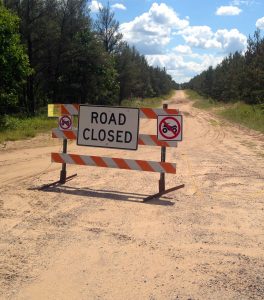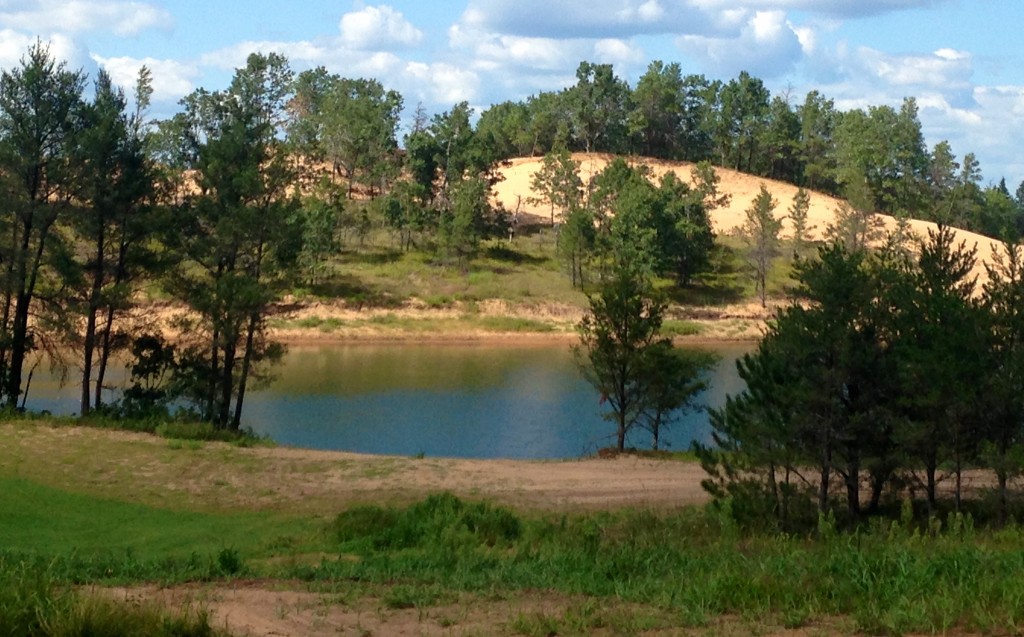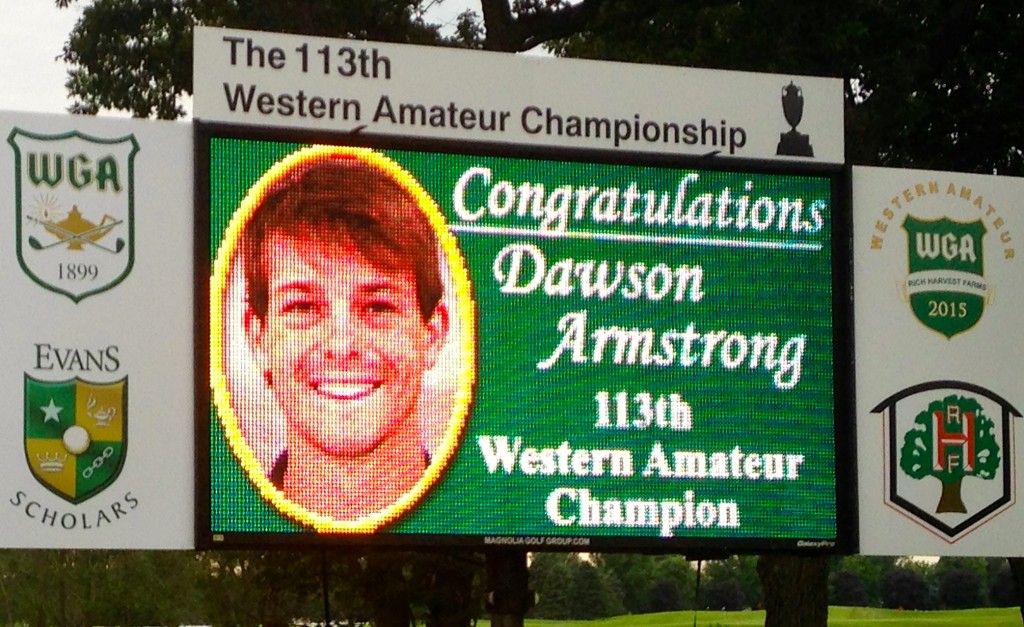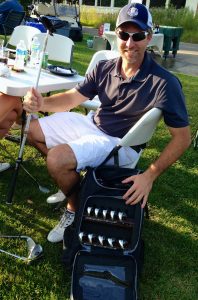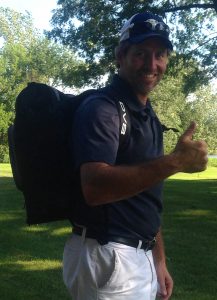Strange? Memorable? Different? Those are all apt descriptions for the 66th playing of the Illinois Open.
My first year covering the Illinois Open was in 1975 – the last year in which the Illinois PGA and Chicago District Golf Assn. were joint managers of the event — and I’ve been to virtually every championship since then.
It was inevitable that this one would be different than all the others. The Illinois PGA had announced months earlier that the finals would be contested at two sites for the first time and qualifiers for it would number 258 instead of the previous 156.
Those changes were made to bolster sagging entry numbers, and they accomplished that goal. The entry number of 498 was up 20 percent from 2014 but, understandably, it didn’t approach the 700-plus that signed up for some of the championships in the 1990s.
Not everyone liked the two-sites format for the final 54 holes. Royal Melbourne, in Long Grove, and Hawthorn Woods Country Club were close together location-wise but the scores were anything but similar.
The first round scores at Royal Melbourne were record lows. David Lawrence, a mini-tour player from Moline, shot a course and tournament record 62 and Northbrook amateur Nick Hardy, Conway Farms pro Matt Slowinski and Web.com Tour player Vince India posted 66s. The next day they went to Hawthorn Woods, and Lawrence and Slowinski shot 80s and Hardy 81. India dropped back, too, but only to 71.
None won after play was all at Royal Melbourne for the final round, though India came close. He was the runner-up to amateur David Cooke – but the difference wasn’t very close. Cooke’s five-shot victory margin was the highest since Gary Hallberg’s win at Elgin Country Club in 1977.
“Hawthorn Woods was quite a bit longer – close to 7,100 yards,’’ said India. “There were a lot of good par-4s over there and the par-3s were tough. Plus, there was a lot of wind and nothing to protect you. It felt like it was blowing harder than it really was.’’
Cooke started the tournament at Hawthorn Woods, shooting 71, then played at Royal Melbourne in back-to-back rounds and carded 65-63. His 199 total was 16 under par.
“When I found out that I had back-to-back grounds there I thought that would be a good thing,’’ said Cooke. “Both are amazing golf courses, but they have a different style.’’
The story of his victory was captivating for much more than his low scores. He became the first amateur to win the title since Brad Benjamin in 2009. Hallberg, who went on to a solid career as a touring pro, was also an amateur when he won 38 years earlier.
Cooke’s win, though, was more about family than it was about history. Last Dec. 23 he lost his younger brother Chad, a 20-year old basketball player at Charleston Southern. He passed away from an apparent heart disorder while playing in a pickup basketball game.
“He was a strong encourager of everybody,’’ said Cooke. “I knew he’d want me to keep playing. I tried to focus on that and think about positives. I have great memories of my little brother. I wish more than anything that we could have him back.’’
Chad was occasionally David’s caddie in tournaments. His older brother Jay, 34, came from his home in South Carolina to work as David’s caddie in the Illinois Open and they were followed by their parents, grandparents and other family members and friends who walked with them in the final round.
“It was an emotional win,’’ said Cooke, who will enter his senior year at North Carolina State in the fall. “It’s been a rough last year, and it meant a lot to me and my older brother that everyone was here.’’
Cooke grew up in Bolingbrook and worked several summers at Bolingbrook Golf Club while getting his game ready for college golf. His family moved to Lisle several months before the Illinois Open. Cooke had never led a tournament over night until he shared a one-stroke lead with Brad Marek of Arlington Heights heading into the final round of the Illinois Open.
“There were nerves on the first tee,’’ Cooke admitted, but they went away quickly when Cooke hit a pitching wedge from 144 yards to six feet and then rolled in a putt for eagle at No. 1. He made birdies on the next three holes as well and coasted from there.
Cooke had been in the next-to-the-last group in the final round of the Illinois Open in 2012 and 2013, partnering with India on one of those occasions, but he fizzled down the stretch both times. He didn’t play in the event in 2014 and basically had only India as a challenger in the final round.
“David played great,’’ said India. “I certainly played fine. I shot 5-under, but what are you going to do?’’
India shot 67 but did claim the $12,500 check for being low pro, and that was a big plus. He struggled as a Web.com Tour rookie in 2014 – though his season included a stunning 61 in U.S. Open local qualifying. India started this season with six tournaments on the PGA’s Latino America Tour.
The University of Iowa product finally got a Web.com Tour start at Cleveland and finished in a tie for 24th. After that he made four of five cuts, so his career as a tour player is on the upswing. The strong showing in the Illinois Open came after India caught a red-eye flight from California on Sunday night in time to make a 2 p.m. tee time in the first round at Royal Melbourne the next day.
Cooke also has aspirations of turning pro after college, and the Illinois Open win was encouraging.
“It was a big motivator for me,’’ said Cooke. “It showed me I could compete with pros. It helps me know that I’m on the right path.’’
Cooke’s round wasn’t the best of the day in the final round. Early starter Matt Weber, an Indiana University sophomore from Hinsdale, posted a 62 to tie Lawrence’s course record but he finished in a tie for 13th place.





